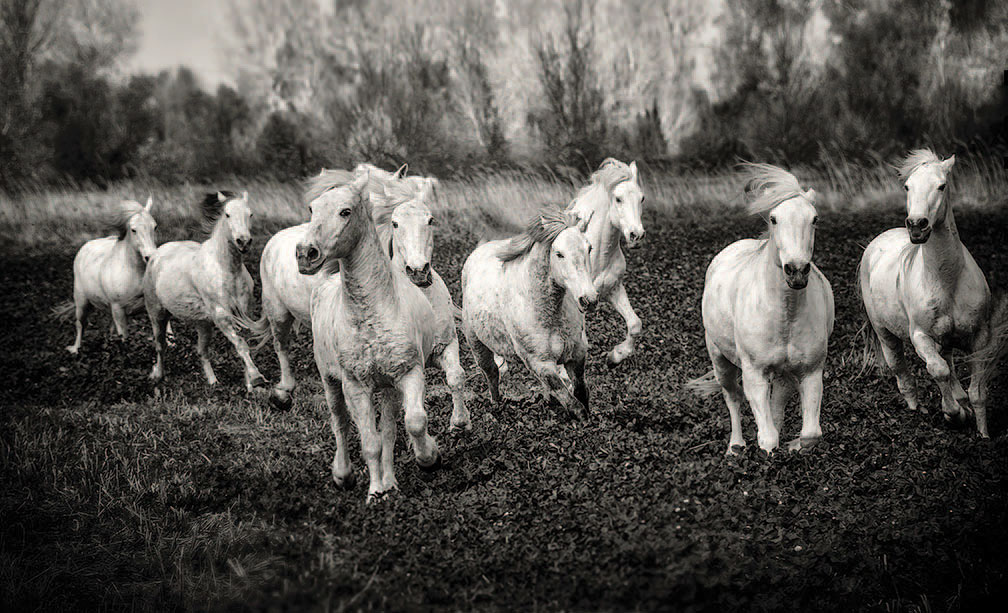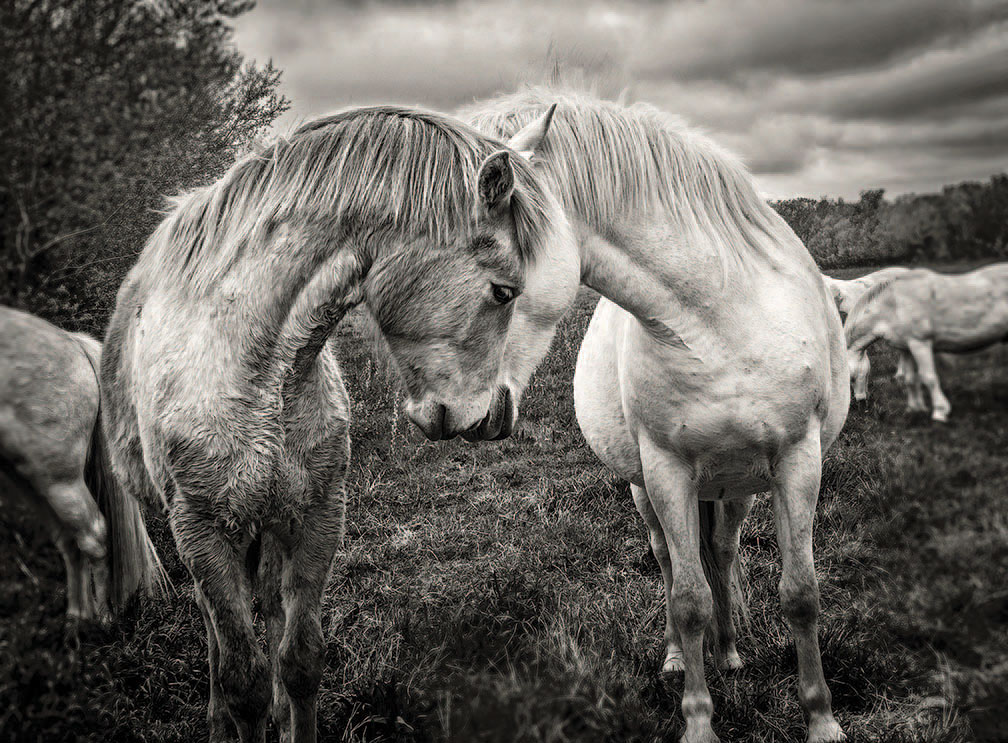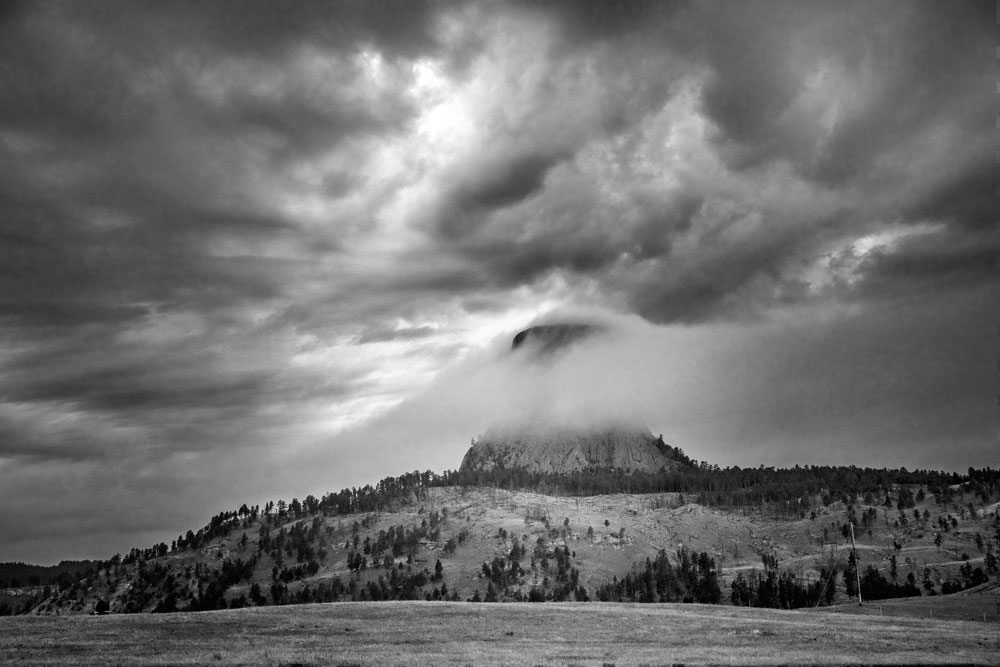Photographer Jody Miller calls the West home, but she has chased light across the globe.
Photographer Jody Miller divides her time between Astoria, Oregon, and Palm Springs, California, but chases the light and photographs far and wide. After working as an animator and effects artist for 40 years, she now pursues her passion for photography full time. C&I talked with Miller about learning from Ansel Adams and shooting everything from the white horses of the south of France to the craggy Badlands of South Dakota.
Cowboys & Indians: You did a 10-day workshop in 1982 with Ansel Adams. What was it like studying with the master?
Jody Miller: Ansel was the most wonderful, generous, kind, sweet man you could ever imagine, and his sense of humor was contagious. His laugh resounded around the room and everyone else smiled, too. He really related to each student of his in an individual, personal way, and he loved to prank people.
For instance, we were all shooting at Point Lobos, California, down on the beach and I was standing next to him as he was shooting a 4-by-5 Polaroid of Point Lobos Bay. He peeled the Polaroid apart and just handed it to me — without looking at it — and asked me, with a straight face, “What do you think?” I didn’t know what to say. It looked horrible. It was all white and there was almost no image there. I was stammering, “It’s a little overexposed?” [Laughs.] And he just started laughing that infectious laugh of his, took it back, and said, “Don’t go showing this in any museum.” He was just like that. He’d do things to get your goat. We visited his home in the Carmel highlands, where he played the piano for us, showed us his darkroom, and we discussed all things photographic. I talked to him at length about his Manzanar series, which he did in a Japanese internment camp in Manzanar, California, during the war. That’s some of my favorite work of his and it was some of his favorite work as well.
Ansel embraced the latest technology, too. At the time, he was shooting with a Hasselblad a lot, in color. He was shooting 2.25-inch medium-format film. He said film is so good now you don’t need to shoot large format anymore — and this was in 1982. ... He would have been a real digital photography fanatic, I’m sure, had he lived longer.

C&I: Like Adams, you’ve chased the light in lots of places, including the south of France, where you found great light and the famed horses of the Camargue delta region.
Miller: The horses enchanted me from the time I first saw them. And I’m not a horse person — I’ve always been afraid of horses, but these horses are so nonintimidating. [Laughs.] Ten of them came running at me and came right up to the fence where I was standing and just stopped. All they wanted was to be petted and have some attention paid to them. They are very affectionate and they love people. They’re just the sweetest, most docile animals. I was really enchanted by them — and they’re all white, you know, so I knew they were going to make some beautiful photographs — and they did. Probably my favorite work to date is of the horses of the Camargue. I ended up going back a half-dozen times during the time I was in Provence just to capture more images of them and really just to visit them again and have more interaction with them. That they just love people is what really surprised me, for being semi-wild animals. It gave me a whole new experience of horses in general. To me they were spiritual, magical creatures who might as well have been unicorns without the horns.

C&I: Closer to home, you recently took a road trip through the West. What really compelled you visually?
Miller: I took a northern route across the United States, stopping in northeastern Oregon, Idaho, Wyoming, and North and South Dakota. The Devils Tower and the Badlands of South Dakota particularly fascinated me. It’s an impassable land and the jagged sandstone formations look like an alien planet. It doesn’t look like anything else in this country. The way the light plays off the jagged peaks is fascinating to a photographer, especially in early morning or late night light, and I just happened to be there during a stormy period, when there was a storm gathering right at a sunset, so I had very dramatic skies, which made the sandstone formations stand out so beautifully.

C&I: What was it like shooting the Devils Tower in Wyoming?
Miller: Devils Tower had always fascinated me as a landscape formation, and I was interested in seeing it in a way that wasn’t a picture postcard. I stopped there and it just happened to be on a night when a storm was gathering and lightning was striking, so I was very happy to be there when there was a layer of clouds and fog surrounding the tower and it looked very mysterious. When you get to the place and the light is right, it’s just a lucky strike.
Miller’s horses of the Camargue are on view at the Seaside, Oregon, public library through May 1. jodymillerphoto.com
From the February/March 2018 issue.














